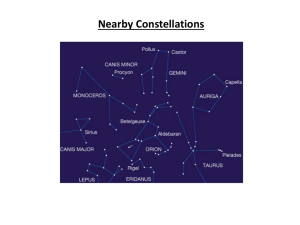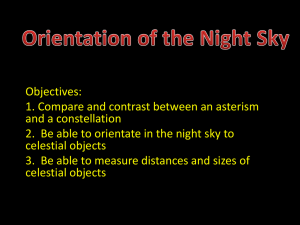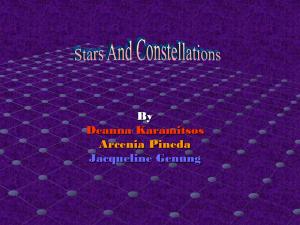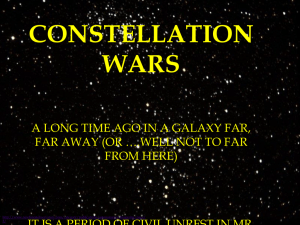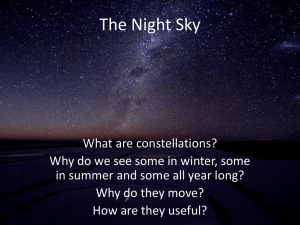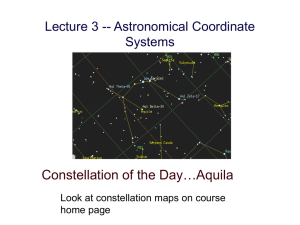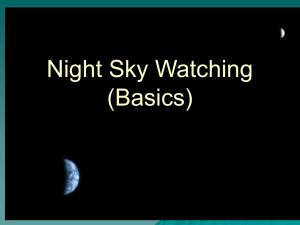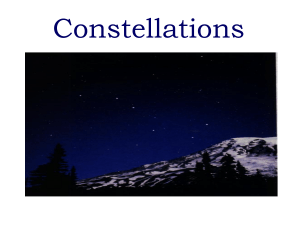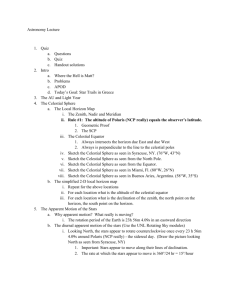Constellation Reading
advertisement
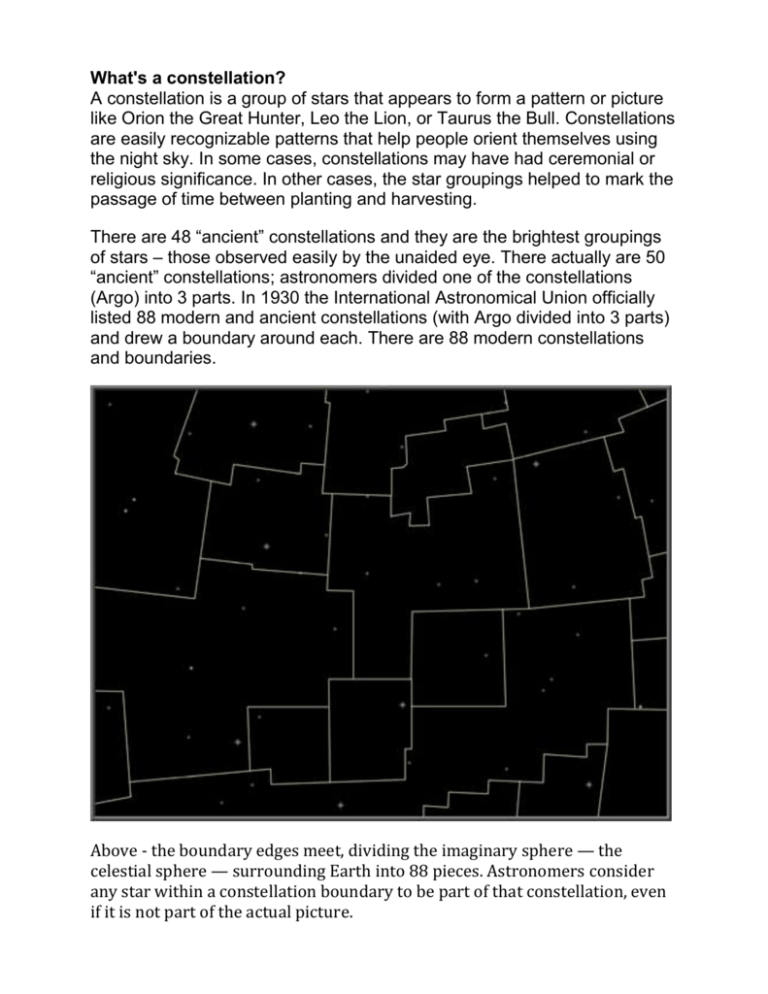
What's a constellation? A constellation is a group of stars that appears to form a pattern or picture like Orion the Great Hunter, Leo the Lion, or Taurus the Bull. Constellations are easily recognizable patterns that help people orient themselves using the night sky. In some cases, constellations may have had ceremonial or religious significance. In other cases, the star groupings helped to mark the passage of time between planting and harvesting. There are 48 “ancient” constellations and they are the brightest groupings of stars – those observed easily by the unaided eye. There actually are 50 “ancient” constellations; astronomers divided one of the constellations (Argo) into 3 parts. In 1930 the International Astronomical Union officially listed 88 modern and ancient constellations (with Argo divided into 3 parts) and drew a boundary around each. There are 88 modern constellations and boundaries. Above - the boundary edges meet, dividing the imaginary sphere — the celestial sphere — surrounding Earth into 88 pieces. Astronomers consider any star within a constellation boundary to be part of that constellation, even if it is not part of the actual picture. Now astronomers name stars based on where their coordinates are found on the celestial sphere. This is an imaginary sphere surrounding Earth. Earth’s north and south poles can be extended in space to this sphere, marking the north and south celestial poles, the poles around which the sphere spins. Polaris marks the intersection of the extended North Pole and the sphere. Earth’s equator, extended into space, intersects the sphere at the celestial equator, dividing it into northern and southern hemispheres. All stars and objects in space, such as constellations, can be mapped relative to the poles and equator of the celestial sphere. Their position north or south of the celestial equator — essentially their latitude — is called “declination.” Their position east or west essentially is their longitude, or right ascension, measured in hours, minutes, and seconds. On Earth, we measure our longitude east or west from Greenwich, England; right ascension on the celestial sphere is measured from the intersection of the ecliptic (plane of Earth’s orbit) and the celestial equator. The Hubble Space Telescope has allowed astronomers to see even more stars! The Hubble Space Telescope Guide Star Catalogue currently lists the coordinates of over 19 million bright objects — 15 million of which are classified as stars! Why Do Most Stars and Constellations Move? The stars are distant objects. Their distances vary, but they are all very far away. Excluding our Sun, the nearest star, Proxima Centauri, is more than 4 light years away. As Earth spins on its axis, we, as Earth-bound observers, spin past this background of distant stars. As Earth spins, the stars appear to move across our night sky from east to west, for the same reason that our Sun appears to “rise” in the east and “set” in the west. Stars close to the celestial poles, the imaginary points where Earth’s north and south axes point in space, have a very small circle of spin. So if you find Polaris, Earth’s north “pole star,” you will observe it move very, very, very little in the night sky. The farther from Polaris, the wider the circle the stars trace. Stars that make a full circle around a celestial pole, like those in the Big and Little Dippers in the northern hemisphere, are called “circumpolar stars.” They stay in the night sky and do not set. At the equator, there are no circumpolar stars because the celestial poles are located at the horizon. All stars observed at the equator rise in the east and set in the west. Why Do We See Different Constellations During the Year? If observed through the year, the constellations shift gradually to the west. This is caused by Earth’s orbit around our Sun. In the summer, viewers are looking in a different direction in space at night than they are during the winter.

